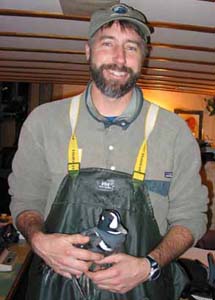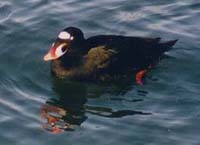|
In 1995, a research program was initiated to address population-level responses of sea ducks (particularly harlequin ducks and Barrow’s goldeneyes) to the 1989 oil spill off the Exxon Valdez in Prince William Sound, Alaska. In collaboration with a research team of agency and university partners, we have documented that these sea ducks continued to be exposed to residual oil for more than a decade following the spill. Further, harlequin ducks have shown long-term demographic consequences of the oil spill, in contrast to the conventional wisdom that oil spill effects are short-lived for bird populations. These findings have important implications for understanding effects of large spills (e.g., Nestucca), low-level chronic releases, such as in boat harbors, and risks of large-scale industry (e.g., oil and gas exploration in northern BC waters). Current studies are examining the links between oil exposure and demography in harlequin ducks, including both field and captive approaches. |
|
 |
|
| Ongoing field work includes capture, biosampling, and radio-marking harlequin ducks to document, on individual and population-level bases, the relationship between exposure to oil and subsequent winter survival. Captive studies at the Alaska SeaLife Center involve exploration of the physiological and behavioural responses to oil exposure, as potential mechanisms that would lead to observed survival reductions in wild harlequin ducks in oiled areas. |
|
|




![]()
